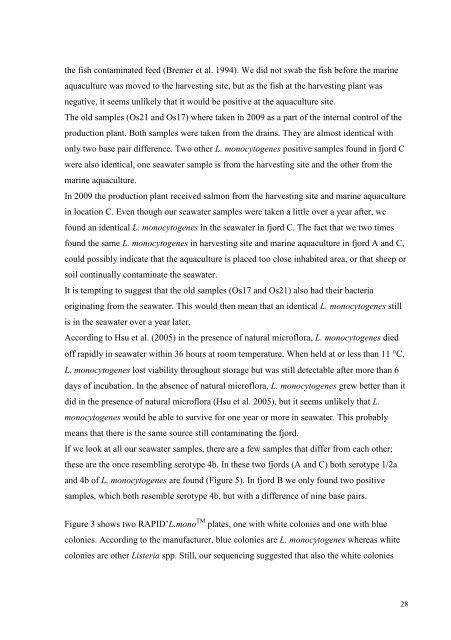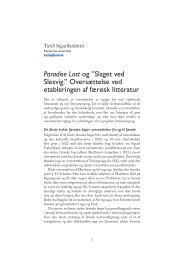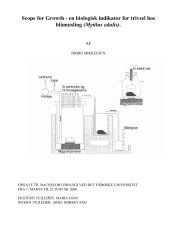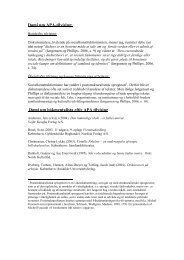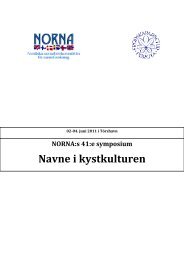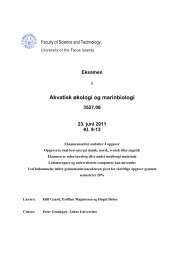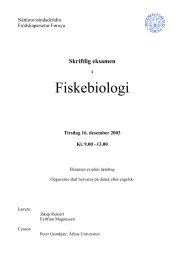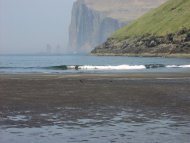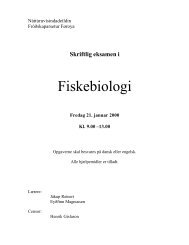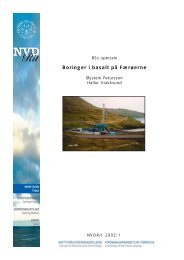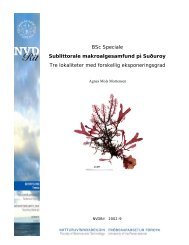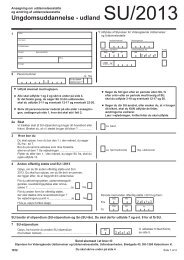Infectious Pancreatic Necrosis Virus (IPNV) - Fróðskaparsetur Føroya
Infectious Pancreatic Necrosis Virus (IPNV) - Fróðskaparsetur Føroya
Infectious Pancreatic Necrosis Virus (IPNV) - Fróðskaparsetur Føroya
Create successful ePaper yourself
Turn your PDF publications into a flip-book with our unique Google optimized e-Paper software.
the fish contaminated feed (Bremer et al. 1994). We did not swab the fish before the marine<br />
aquaculture was moved to the harvesting site, but as the fish at the harvesting plant was<br />
negative, it seems unlikely that it would be positive at the aquaculture site.<br />
The old samples (Os21 and Os17) where taken in 2009 as a part of the internal control of the<br />
production plant. Both samples were taken from the drains. They are almost identical with<br />
only two base pair difference. Two other L. monocytogenes positive samples found in fjord C<br />
were also identical, one seawater sample is from the harvesting site and the other from the<br />
marine aquaculture.<br />
In 2009 the production plant received salmon from the harvesting site and marine aquaculture<br />
in location C. Even though our seawater samples were taken a little over a year after, we<br />
found an identical L. monocytogenes in the seawater in fjord C. The fact that we two times<br />
found the same L. monocytogenes in harvesting site and marine aquaculture in fjord A and C,<br />
could possibly indicate that the aquaculture is placed too close inhabited area, or that sheep or<br />
soil continually contaminate the seawater.<br />
It is tempting to suggest that the old samples (Os17 and Os21) also had their bacteria<br />
originating from the seawater. This would then mean that an identical L. monocytogenes still<br />
is in the seawater over a year later.<br />
According to Hsu et al. (2005) in the presence of natural microflora, L. monocytogenes died<br />
off rapidly in seawater within 36 hours at room temperature. When held at or less than 11 C,<br />
L. monocytogenes lost viability throughout storage but was still detectable after more than 6<br />
days of incubation. In the absence of natural microflora, L. monocytogenes grew better than it<br />
did in the presence of natural microflora (Hsu et al. 2005), but it seems unlikely that L.<br />
monocytogenes would be able to survive for one year or more in seawater. This probably<br />
means that there is the same source still contaminating the fjord.<br />
If we look at all our seawater samples, there are a few samples that differ from each other;<br />
these are the once resembling serotype 4b. In these two fjords (A and C) both serotype 1/2a<br />
and 4b of L. monocytogenes are found (Figure 5). In fjord B we only found two positive<br />
samples, which both resemble serotype 4b, but with a difference of nine base pairs.<br />
Figure 3 shows two RAPID’L.mono TM plates, one with white colonies and one with blue<br />
colonies. According to the manufacturer, blue colonies are L. monocytogenes whereas white<br />
colonies are other Listeria spp. Still, our sequencing suggested that also the white colonies<br />
28


